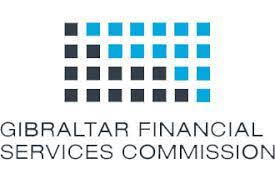Navigating Bounce Back Loans: Director Disqualification

During and since the Covid-19 Pandemic, Bounce Back Loans have been a lifeline for many struggling
businesses. But their misuse can lead to severe consequences for directors and companies alike. In
this blog post, we’ll delve into the complexities surrounding these loans, the potential pitfalls, and
the importance of responsible financial management.
Understanding Bounce Back Loans
Bounce Back Loans were designed to support businesses during challenging times, enabling them to
cover supplier debts and operational costs. However, some individuals have improperly diverted
these funds into personal accounts, classifying them as director’s loans (which we explore in this
article). Such actions not only violate the loan’s intended purpose but can also result in director
disqualification.
In cases of company insolvency, liquidators may demand the return of these funds to the company,
which then becomes part of the liquidation estate. This estate is intended to benefit creditors,
including the government, which guarantees these unsecured loans. Oftentimes, the liquidation
process can be complex, often leaving little to no funds for distribution to creditors, including banks.
Navigating the legal complexities associated with Bounce Back Loans requires a nuanced
perspective. Misfeasance or director disqualification actions can be triggered through various
means, including detailed inquests or specific forms like the D1 form filled out by the liquidator. This
intricate process demands thorough comprehension and careful consideration of potential
consequences.
Abuse of Bounce Back Loans
Since their implementation, the abuse of Bounce Back Loans has become a widespread issue, with
individuals using the funds for a plethora of inappropriate purposes such as: Investments, lending to
family members, or even personal projects like home extensions. This totally undermines the loan’s
purpose and has since led to numerous disqualifications, typically ranging from three to eight years,
depending on the severity of abuse.
In some instances, the Insolvency Service targets individual directors for disqualification rather than
repayment. This can result in an examination process conducted by an examiner from the Insolvency
Service, which involves a lengthy 50-page booklet and may require the director’s physical presence.
When facing an investigation or prosecution, proper guidance becomes invaluable. Questionnaires
from the Insolvency Service or the prosecution team must be completed carefully to determine
whether further inquiries will be made. A single response can sometimes deter further action, but in
more substantial cases, multiple rounds of questioning may occur, potentially even leading to
prosecution.
I&L’s Client Representation Service
I&L offers a client representation service to assist individuals in these situations, helping them
navigate the questionnaire and prepare for interviews if necessary. However, the timing of
engagement impacts the complexity of the task and the associated fee. It’s essential to seek
assistance early to avoid higher costs once a matter has escalated to the prosecution team.
The timeline for these procedures can be lengthy. The liquidator has two months to complete their
report, and the Insolvency Service has three years from the date of liquidation to initiate disqualification proceedings. However, due to the nature of civil service operations, the process may
take longer than expected.
The actions of the Insolvency Service are primarily based on the Director’s Explanation of Accounts
(DEA) report and information provided by the liquidator. There’s limited room for the liquidator to
withhold information, given the specificity of the questions asked. Failure to comply with document
submission requirements can result in a six-year disqualification.
Directors are duty-bound to maintain the company’s books and records for a minimum of six years.
Even in cases where records are stolen or damaged, the director remains responsible for delivering
these essential documents. Fees for services related to director disqualification cases can vary based on the situation’s gravity. Our success rate in avoiding prosecution stands at approximately 90%, and the outcome depends on the strength of your case and the willingness to cooperate.
In conclusion, Bounce Back Loans have provided crucial support to businesses, but their misuse can
lead to severe consequences. Directors must exercise responsible financial management, seek
guidance when needed, and understand the legal intricacies involved in handling these loans. By
doing so, they can protect both their businesses and their personal reputations.
Understanding the winding up petition: A crucial tool
In the world of insolvency, a winding up petition holds significant importance. When a company has received a statutory demand (SD) and fails to raise…
Read MoreUrgent Call to Action: Have You Invested in Beech Holdings (Manchester) Ltd?
If you or anyone you know has invested in Beech Holdings (Manchester) Ltd, it’s time to take action immediately and get in touch. The Situation…
Read MoreBankruptcy Annulment: A Fresh Start for Financial Recovery
Bankruptcy is often viewed as a last resort for individuals overwhelmed by debt, offering a path to financial relief but also leaving a significant mark…
Read MoreCastle Trust and Management Services Ltd- The Big Problem for the Gibraltar Financial Services Commission
The collapse of Castle Trust and Management Services Ltd (CTMS) has raised serious questions aboutthe role and effectiveness of the Gibraltar Financial Services Commission (GFSC)…
Read More



